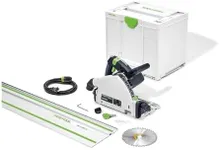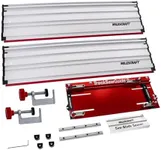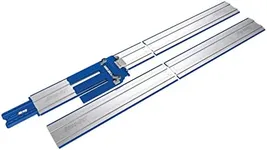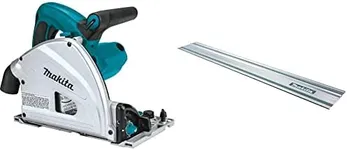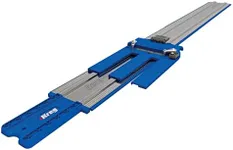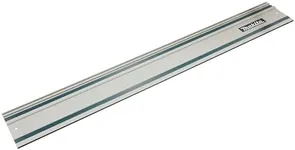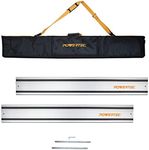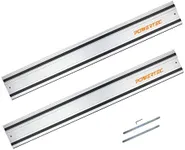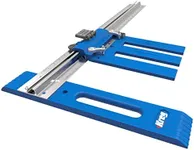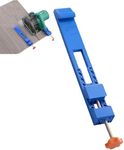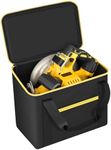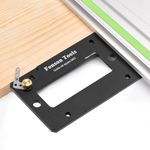Buying Guide for the Best Circular Saw Track Guides
Choosing the right circular saw track guide can significantly enhance the precision and ease of your cutting tasks. A track guide helps you make straight, accurate cuts with your circular saw, which is essential for both professional woodworkers and DIY enthusiasts. When selecting a track guide, consider the following key specifications to ensure you get the best fit for your needs.LengthThe length of the track guide determines the maximum length of the cut you can make without repositioning the guide. This is important because longer guides allow for longer, uninterrupted cuts, which can save time and improve accuracy. Track guides typically come in lengths ranging from 24 inches to over 100 inches. For small projects or cuts, a shorter guide may suffice, while larger projects or longer cuts will benefit from a longer guide. Consider the typical size of the materials you work with to choose the appropriate length.
MaterialTrack guides are made from various materials, including aluminum, steel, and plastic. The material affects the durability, weight, and stability of the guide. Aluminum is lightweight and resistant to rust, making it a popular choice for many users. Steel is heavier and more durable, suitable for heavy-duty use. Plastic guides are lighter and more affordable but may not be as durable. Choose a material that balances durability and ease of handling based on your specific needs and the frequency of use.
CompatibilityCompatibility refers to whether the track guide can be used with your specific circular saw model. Not all track guides are universal, so it's important to check if the guide is compatible with your saw. Some guides are designed to work with specific brands or models, while others are more versatile. Ensure that the guide you choose can securely attach to your saw and provide the necessary support for accurate cuts.
Ease of UseEase of use encompasses features like setup time, adjustability, and user-friendly design. A track guide that is easy to set up and adjust can save you time and frustration. Look for guides with clear markings, simple clamping mechanisms, and intuitive designs. If you frequently switch between different cutting tasks, a guide that allows for quick adjustments will be particularly beneficial. Consider how often you will use the guide and how important convenience is to your workflow.
AccuracyAccuracy is a critical factor for any track guide, as it directly impacts the quality of your cuts. High-quality guides provide precise, straight cuts with minimal deviation. Features that enhance accuracy include anti-slip strips, secure clamping systems, and straight edge designs. If precision is crucial for your projects, invest in a guide known for its accuracy. For general use, a moderately accurate guide may be sufficient, but for fine woodworking or professional tasks, prioritize accuracy.
PortabilityPortability refers to how easy it is to transport and store the track guide. If you need to move your guide between job sites or have limited storage space, a lightweight and compact guide will be advantageous. Some guides are designed to be collapsible or come with carrying cases for added convenience. Consider your mobility needs and choose a guide that you can easily transport without compromising on other important features.
